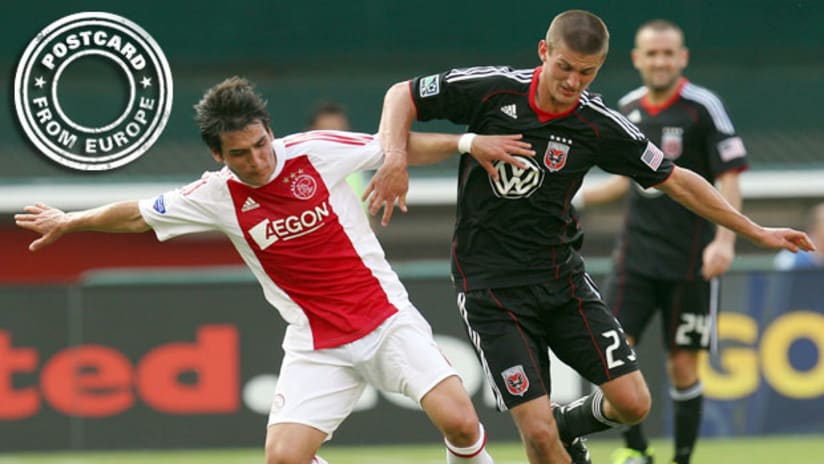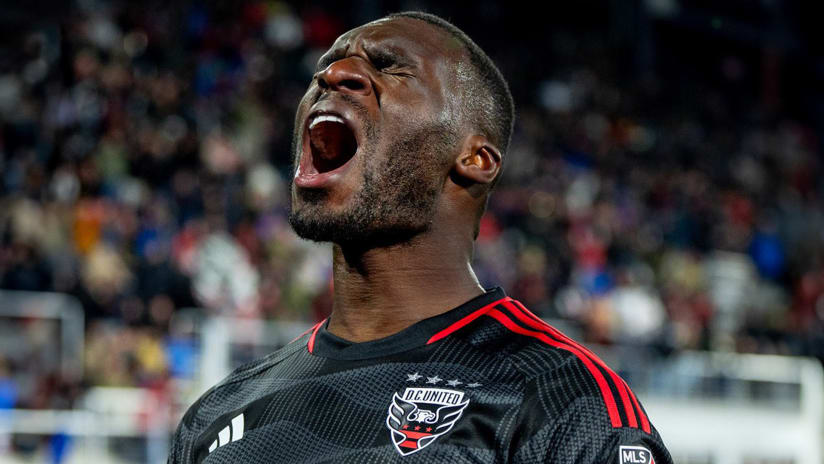AMSTERDAM — The message was clear when US youth technical director Claudio Reyna unveiled the program's new coaching curriculum in April: We want a national team that plays and wins like Ajax.
To do those two fun things, the former Captain America explained, we must first develop players like the 30-time Dutch champions. Even a short glance at the engaging USSF document screams Ajax. In fact, the first sentence of opening section "Style and Principles of Play" cuts right to the chase:
"All teams will be encouraged to display an offensive style of play based on keeping possession and quick movement of the ball."
There's a diagram mandating a 4-3-3 set followed by such bullet points as unbridled shooting, playing out of the back and ball-hoarding. The second section, which outlines coaching tasks, pushes concepts such as combination play and position switching.
Stateside observers often find the Ajax way bold, if not overly risky. In Amsterdam, however, there is no other way to be on the field but bold — and yes, sometimes even risky.
"We don't want the players to be afraid to make a mistake," Ajax assistant youth director Edmond Claus told MLSsoccer.com. "We want them to always try to win. And we want to win with style. We want to entertain the fans, because that's what it's all about. We want to be talked about."
If this new curriculum suddenly sounds like more than a simple plan to lend some sex appeal to the national team, you catch on quick. And US Soccer isn't the only group from sea to shining sea getting on board to build their name through cavalier winning.
Youth coaches in America are increasingly relying on Ajax training drills. In MLS, Aron Winter is currently in the growing pains stage of installing the 4-3-3 system at Toronto FC, and D.C. United are among the clubs angling to link their youth academy with the Dutch masters.
So we know the plan, but what effect will it have on the American player or team? Sure, FC Barcelona added some Catalan spices to this Ajax system and now rule the world with their stew. But Americans aren't currently cooking with the same ingredients, so to speak.
Claus, who also coached "the plan" at Ajax Cape Town and HFC Haarlem, sees no reason why America can't also make it their own.
"There is a normal way people describe an American player: He works very hard, is disciplined and good for the team," said Claus. "These are also the things we look for in the youth development at Ajax. These are the types of players who can make it to the first team."
The one modern example of how schooling an American the Ajax way can turn out is John O'Brien. Having joined the academy at 16, he won three pieces of domestic silver in the Netherlands, played in a Champions League quarterfinal and starred for the US at the 2002 World Cup despite a career shortened by injuries.
As for the intended effects on team play, let's focus on five key elements:
1. Better use of space. There are several facets of adopting the Amsterdam view on this, but the overall gist can be boiled down to a one-sentence directive: Make the field expansive in attack and cozy in defense.
The wingers stay wide to keep defenses stretched at all times. Playing the Ajax way isn't about attacking lanes given; they create the space they want. When wide attackers pinch in, many desired paths go unpaved.
When Ajax lose the ball, they close space and pressure potential passing targets, forcing opponents to play out of the back at their own peril. As much as the Dutch like to roam with the ball, they are very stingy about space without it and eager to get back on offense.
2. Technique, technique, technique. Ajax training methods laser-focus on making tough touches under pressure, one-time passing, shooting, defensive ball handling, run timing and crossing. Enough said.
3. The fatigue swing. Simply put, those attacking don't chase. Even teams as fit as the Red, White and Blue would love the energy boost. For those MLS teams that play through summer dog days, energy conservation might be the best tactic possible.
4. Managing a game. We could go on all day about the minute virtues of hogging the ball to score first and close out results, but our guest professor can sharpen the point.
"We want to control the game," said Claus. "When you keep the ball, you can control the game."
5. A new attitude. We had to face facts, and Reyna did it for us. Hanging around matches hoping to smash 'n' grab wasn't going to take us to the next level. The margin of error is small and the emotional tank gets low. At some point, we need to be able to take the game to opponents.
Surely, you're all now thinking this sounds great and wondering how long it will take before "Total Football" sweeps yet another nation.
"I think with one team, in a year, you can make a lot of progress," offered Claus. "When you talk about an entire program, that can take a bit longer. You start with the youth and teach them the way to do things. When they get older, you have the system."












